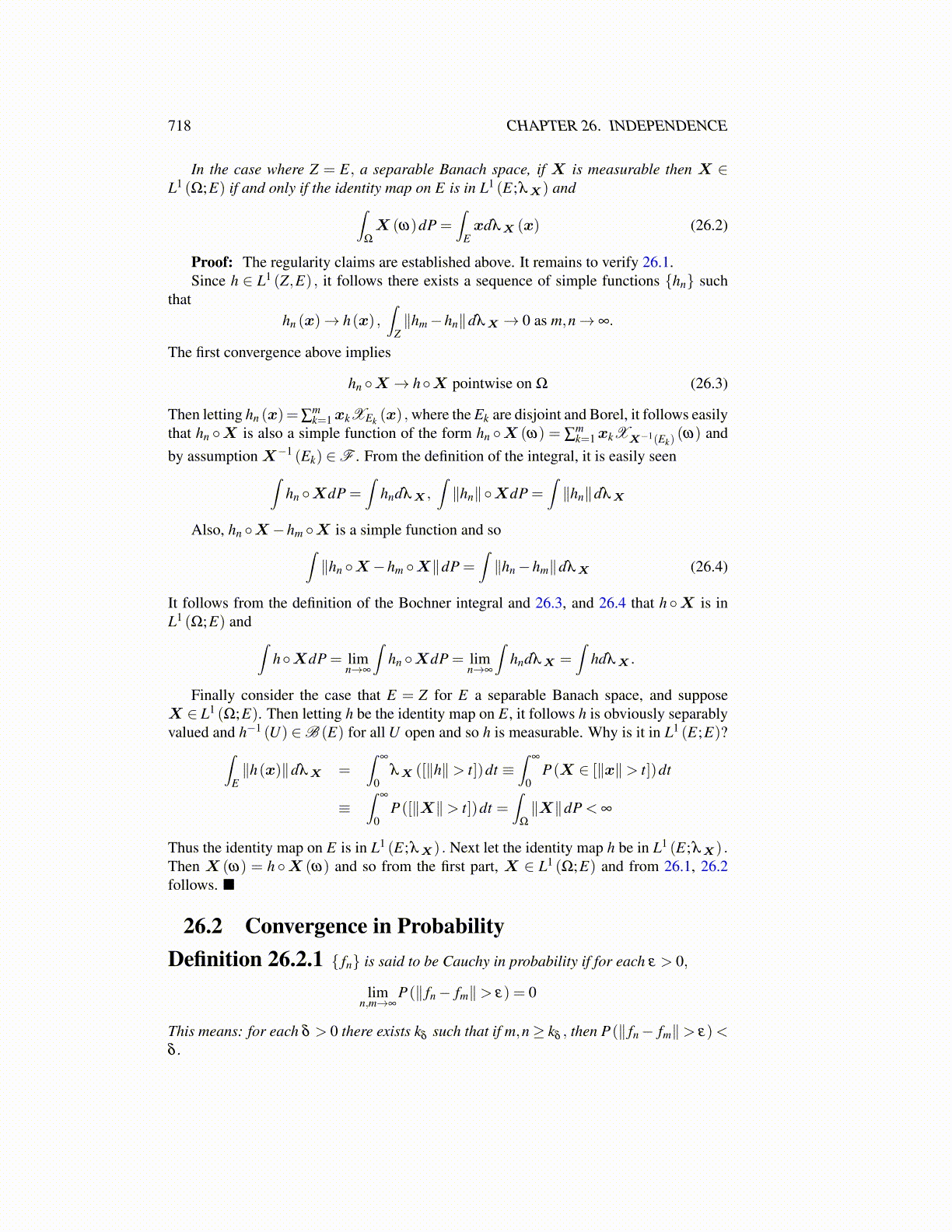
718 CHAPTER 26. INDEPENDENCE
In the case where Z = E, a separable Banach space, if X is measurable then X ∈L1 (Ω;E) if and only if the identity map on E is in L1 (E;λX) and∫
Ω
X (ω)dP =∫
ExdλX (x) (26.2)
Proof: The regularity claims are established above. It remains to verify 26.1.Since h ∈ L1 (Z,E) , it follows there exists a sequence of simple functions {hn} such
thathn (x)→ h(x) ,
∫Z∥hm−hn∥dλX → 0 as m,n→ ∞.
The first convergence above implies
hn ◦X → h◦X pointwise on Ω (26.3)
Then letting hn (x)=∑mk=1xkXEk (x) , where the Ek are disjoint and Borel, it follows easily
that hn ◦X is also a simple function of the form hn ◦X (ω) = ∑mk=1xkXX−1(Ek)
(ω) andby assumptionX−1 (Ek) ∈F . From the definition of the integral, it is easily seen∫
hn ◦XdP =∫
hndλX ,∫∥hn∥◦XdP =
∫∥hn∥dλX
Also, hn ◦X−hm ◦X is a simple function and so∫∥hn ◦X−hm ◦X∥dP =
∫∥hn−hm∥dλX (26.4)
It follows from the definition of the Bochner integral and 26.3, and 26.4 that h ◦X is inL1 (Ω;E) and ∫
h◦XdP = limn→∞
∫hn ◦XdP = lim
n→∞
∫hndλX =
∫hdλX .
Finally consider the case that E = Z for E a separable Banach space, and supposeX ∈ L1 (Ω;E). Then letting h be the identity map on E, it follows h is obviously separablyvalued and h−1 (U) ∈B (E) for all U open and so h is measurable. Why is it in L1 (E;E)?∫
E∥h(x)∥dλX =
∫∞
0λX ([∥h∥> t])dt ≡
∫∞
0P(X ∈ [∥x∥> t])dt
≡∫
∞
0P([∥X∥> t])dt =
∫Ω
∥X∥dP < ∞
Thus the identity map on E is in L1 (E;λX) . Next let the identity map h be in L1 (E;λX) .Then X (ω) = h ◦X (ω) and so from the first part, X ∈ L1 (Ω;E) and from 26.1, 26.2follows. ■
26.2 Convergence in ProbabilityDefinition 26.2.1 { fn} is said to be Cauchy in probability if for each ε > 0,
limn,m→∞
P(∥ fn− fm∥> ε) = 0
This means: for each δ > 0 there exists kδ such that if m,n≥ kδ , then P(∥ fn− fm∥> ε)<δ .